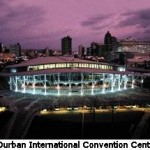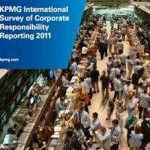Delhi has touched 17 million in population and is expected to touch 23 million by 2021. The migratory influx from adjoining areas makes planned development of Delhi an uphill task.

Realizing the intricacies and complexities of planning and providing energy supplies to the people in Delhi as well as the whole National Capital Region (NCR), and encouraged by the launch of the Global Study on ‘Energy for Mega Cities’ by the World Energy Council (WEC), the Indian Member Committee of the council – WEC-IMC – took a conscious decision to undertake the study on “Sustainable Development of Energy Sector in Delhi Beyond 2010”. The Study required an institutional arrangement that was provided by WEC-IMC, and also required inputs from various agencies and experts. The Study sets a vision ‘to make Delhi a global metropolis and a world-class city growing in a sustainable environment’.
The study team comprised of 41 members headed by Mr. Pradeep Chaturvedi, Chairman of the Study Committee. The Study was released on August 20, on the occasion of Akshaya Urja Diwas 2010, by Mr. Rakesh Mehta, Chief Secretary, Government of Delhi. The event was attended by Baroness Sandip Verma – Baroness-in-waiting to Her Majesty and Minister in Government Whips Office, House of Lords, U.K.; Padmashri Dr. Ram Dayal Munda – MP, Minister, National Advisory Council, Government of India; Mr. R. S. Sharma – former CMD, NTPC Limited; Mr. Ganesan Natarajan – CEO, Ennore Coke Ltd., and other dignitaries.
ThinktoSustain spoke to Mr. Pradeep Chaturvedi on the various aspects of the study. The interview is available at https://thinktosustain.com/ContentPageViewPoint.aspx?id=%20624. The scope of the study, objectives and key findings are being highlighted for a better appreciation from policy makers, administrators, infrastructure experts and residents of NCR.
Executive Summary
Introduction
The launching of the Global Study on ‘Energy for Mega Cities’ by the World Energy Council was an opportunity for WEC-IMC to showcase the efforts of City of Delhi to meet the energy needs for economic growth, social development and transportation. A decision was taken to undertake a study to ascertain as to how the thrust given to infrastructure development for the Commonwealth Games could lead to Sustainable Energy Sector Development beyond 2010.
The Objectives set out for the Study were:
- Study the status of energy supply for economic growth, social development and environmental development.
- Study the Development Targets for Master Plan of Delhi 2021 and integrate impact of infrastructure creation for Commonwealth Games.
- Identify the Policy Interventions and Actions to accelerate the achievement of targets of sustainable development set out in Master Plan of Delhi 2021, especially for inclusive growth opportunities to all economic sections of the society by ensuring sustainable energy supply in environmentally friendly manner.
- Showcase Delhi as a Model Mega City of Sustainable and Inclusive Growth.
The study team had a strength of 41 members from various stakeholder domains. Click here to see the List of all Study Team Members.
Growing Delhi
Delhi as the National Capital has a distinct and unique character. It is a growing and expanding magnet of attraction for people from all across the country and also a hub for the region surrounding it. Planning for a metropolis like Delhi, therefore, cannot be limited within its boundaries. The NCR (National Capital Region) is a planning concept and entity, and is not a single administrative or political unit. The area under NCR comes under Delhi, Haryana, Rajasthan and Uttar Pradesh that have their own administrative boundaries, but they have a common National Capital Region Planning Board, which helps in coordinating their development plans. However, within the region, there are agencies under the Central Government, State Governments and local bodies and village-level bodies.
Delhi offers immense opportunities, which is evident from its per capita income, which is more than double the national average. Rising population of Delhi, natural as well as migratory, puts the infrastructure under stress and this stress is bound to increase with the population of Delhi estimated to rise from the current population of about 17 million to 22-23 million by 2021-22. Making adequate electricity and transport services available at an affordable cost, amongst many other services, is a daunting and challenging task for which Delhi has to prepare. Delhi has to meet the transport needs of not only the residents of Delhi but even for those who daily travel to Delhi. Some major initiatives are on the anvil, Delhi Metro being the one in fore-front which is bound to transform the way Delhi travels, with no alternative but to shift from personalized means of travel.
Commonwealth Games had created an opportunity for cascading the development achievements and establishing all infrastructures at an early date.
Roadmap for Growth

Strategies for Development of Settlement Systems: NCR Regional Plan 2021 focuses on planning settlements to ensure that optimum socio-economic development becomes possible with minimum movement. Efforts are on to develop counter magnet areas in the surrounding and nearby states.
Electricity Generation and Supply: Projected load demand is expected to reach 11,000 MW by 2021. New coal-based generation is not permitted in Delhi and the existing generation capacity in Delhi including the proposed additional 2000 MW will not be sufficient, and the gap between the core generation and the load demand will further increase. Stations are being planned outside Delhi through JV route, or purchase of power through central allocation is being resorted to.












